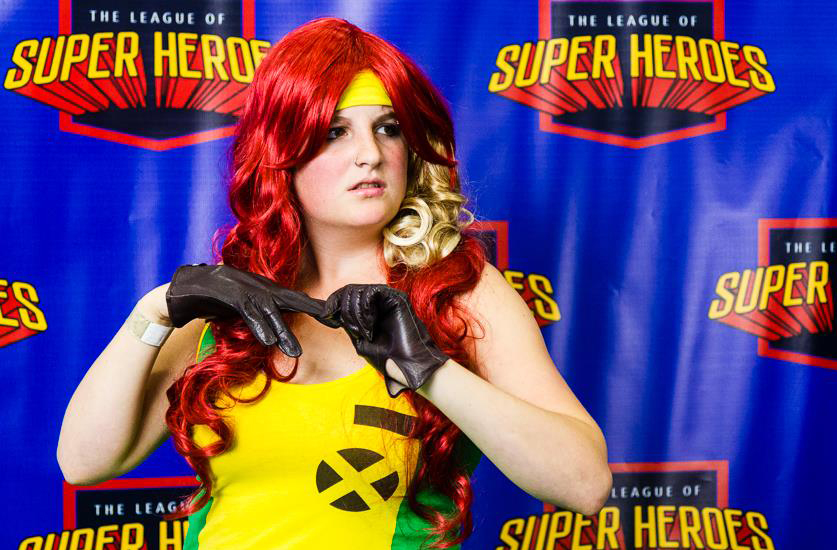Attending the event
/Step 4: At the event
Having just attended a convention this past weekend, I can speak with absolute certainty to the fact that keeping in character while cosplaying will provide you with the energy needed to last all day surrounded by people – especially those who are interested in taking your picture.
PHOTO BY DAVID MACKINNON
I have a bit of a ritual whenever I first get to a convention to help me get into character. When I first arrive, rather than going directly into the hall, I go into the bathroom. While double-checking that all the pieces of my costume are in place, I pull a few faces and poses, tilting my head up and down to find the best angle while under fluorescent lighting (lighting is one of things you always forget to factor in until you get a picture back that has so many shadows on your face that you end up looking like a caveman). Don’t be embarrassed about getting these last few minutes of practice in: I guarantee that you will be surrounded by other cosplayers doing the same.
While wandering the hall, the only time I let my guard down is if I’m looking down at the booths for something to buy. If I’m simply walking through the aisles or crossing the floor to get to the next area, I’m on full alert for other characters from my “universe”. As The Riddler this past weekend, it was easy to keep my eyes peeled for other characters from Batman. I find that something as easy as narrowing my eyes at a passing Batman or Batgirl, or high-fiving a Joker or Two-Face raises a sense of community and pride that I’ve totally immersed myself into the character I’ve chosen.
Another thing that many cosplayers don’t always think about when they’re trying to fully become the character they’re dressed as is their resting facial expression. Obviously you’re not going to be able to hold a crazy smile or furious bared teeth all day, but finding a comfortable expression that still suits your character while you’re not actively posing for a photo is important, because there’s a good possibility that people will take your picture when you’re not expecting it.
Ultimately, the most important part of getting into character is to have fun with it, and allow yourself to take on the personality traits suited to whichever costume you want to wear out.
Alex is an aspiring author and second-year Professional Writing student at Algonquin. She loves to edit manuscripts, make costumes and play video games. Alex finished her first novel last year during National Novel Writing Month and intends to write a second this coming November, despite working and going to school.








